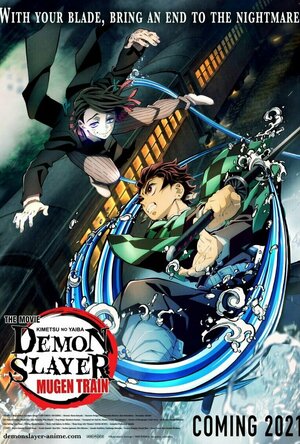Bob Mann (459 KP) rated Saint Maud (2020) in Movies
Oct 6, 2020
Maud (Morfydd Clark) is a palliative nurse looking after ex-choreographer Amanda (Jennifer Ehle). Maud is extremely religious and feels God move in her... regularly. Acting on His guidance, Maud sets out to save the soul of her ailing bohemian charge. But is Amanda beyond reach, and how will the zealot-like Maud react to that rejection?
Morfydd Clark appears so young in this film that you would think this was her debut film. But she's actually 30 years old and has quite an impressive filmography already. Although this is her movie-lead debut, she's had a substantial part alongside Kate Beckinsale in the excellent "Love and Friendship" and smaller parts in "Crawl", "The Personal History of David Copperfield" and the fun "Pride and Prejudice and Zombies". She's likely to get more worldwide exposure soon as a young Galadriel in Amazon's new version of "Lord of the Rings".
As Maud she is simply superb - expressing such a range of joy, hurt and despair that you must think a BAFTA Rising Star nomination should be on the cards.
Clark is ably supported in the leading role by the splendid Jennifer Ehle, still so memorable to me as Elizabeth Bennett from the BBC's "Pride and Prejudice".
Scarborough is also a star of "Saint Maud". The Yorkshire seaside town is another star of the movie. Clearly filmed before lockdown, the rainy and windswept resort looks bleak and unwelcoming. And that's before Covid! Many of those struggling bars and amusement centres, as in other resorts all around the UK, are now on their last legs.
Adam Janota Bzowski supplies the impressively claustrophobic music, which deserves recognition. A scene with Maud, flicking a lighter rhythmically in time with the sonorous beat, is a masterpiece in musical choreography and editing (by Mark Towns).
At the heart of this horror-thriller is whether, following a Dawkins-style argument, fervent religious followers are less insightfully correct and more mentally unstable and misguided. When is the voice of God just the voice in your head? And how would you tell the difference anyway? Piecing together the plot and motivations of Maud was intellectually challenging and rewarding.
I always get a little tense and nervous when I see the word "horror" on a movie bill. I am NOT a great horror fan! But for me, as a 'horror movie', "Saint Maud" is of the 'horror-lite' variety. Highly watchable, it builds more in the way of creeping dread than cheap shocks. There were only a couple of jump-scares (but for me, the one in the finale was a doozy!).
A BBC interview with Rose Glass I just saw says she relates Maud's relationship with God as like many people's relationship with social media. Always looking for support, guidance and affirmation. Interesting.
This is also an obviously female-led picture. All the men are complete tools. no, really, literally they are. It makes me feel ashamed to be among their number.
Overall, "Saint Maud" is a minor classic. I didn't go in with great expectations of this one, but I was pleasantly surprised. As a small British movie, it packs a punch significantly above its weight. When I came out I was at about a 7* rating. But this is one that really stayed with me, and I've subconsciously thought about little else all day. So for that reason I am going to escalate my rating to something more appropriate.
You might struggle now to see it on the big screen, but if you can do so, it comes with a recommendation from me. I think this one could REALLY be a "Marmite film".... so if you see it, let me know what you thought with a comment on One Mann's Movies here https://rb.gy/9k93ck . (Thanks).

Tracks4Africa Guide
Reference and Travel
App
Welcome to the most detailed travel guide for overland travel in Africa. This offline app offers a...

Timeline Cover Photo Maker Free - Design and create your own custom Facebook profile page covers that reflects your personality!
Photo & Video and Social Networking
App
The App Store's most popular Cover Photo Making App for your Timeline now has a FREE version! ...

Money Box Pro. Savings Goals
Finance and Lifestyle
App
Take control of your focused savings plan and put the power to purchase what you want into the palm...

Sleep application
Health & Fitness and Medical
App
--- This is a sleep-inducing application. --- ●Thank you very much! #3 App Store BEST OF 2015 in...

SingTrue: Learn to sing in tune, pitch perfect
Music and Education
App
SingTrue can teach anybody to sing in perfect tune. Even if you think you're tone deaf! ~~ Selected...

Zombie Hunter: FPS Apocalypse
Games and Entertainment
App
The new real zombie war game with incredible 3D graphics. Your goal is to survive from the undead...

Bound for Justice Box Set
Book
Bound for Justice: A Box Set Against the Rules Targeted by a drug cartel, Teague is out for...
ANTHOLOGIES AND COLLECTIONS BONDAGE AND BDSM CONTEMPORARY EROTIC ROMANCE
Bob Mann (459 KP) rated Bridget Jones's Baby (2016) in Movies
Sep 29, 2021
Proving that enormous ditzyness and lack of talent need not be an impediment to a successful career, Bridget is now a top TV floor manager on a cable news station, anchored by friend Miranda (an excellent Sarah Solemani). In an effort to shake Bridget out of her malaise, Miranda takes her to a music festival (featuring some fun cameos!) where she has a one-night-stand with the delectable (speaking at least for all the women in my audience) Jack (Patrick Dempsey). Following another one-night-stand with D’Arcy and finding herself pregnant, a comedy of farce follows with one expectant mother and two prospective fathers competing for Bridget’s affections.
OK. So it’s not bloody Shakespeare. But it is an extremely well-crafted comedy, and as a British rom-com it significantly out-does many of the efforts of the rom-com king – Richard Curtis – in recent years. As a series its just amazing how many of the original cast have been reunited after 2004’s rather lacklustre “Bridget Jones: Edge of Reason”. Particularly effective are Bridget’s parents, played by the delectably Tory Gemma Jones and the ever-perfect Jim Broadbent. And Bridget’s trio of irreverent friends: Shazzer (Sally Phillips), Jude (Shirley Henderson) and Tom (James Callis) are all back. All are either well into parenthood or have impending parenthood, adding to the pressure on Bridget’s aching ovaries.
New to the cast, and brilliant in every scene she’s in, is the ever-radiant Emma Thompson as Bridget’s doctor. Is there any actress in the movies today that can deliver a comic line better-timed than Thompson? I doubt it. Just superb. And Thompson also co-wrote the screenplay, together with Bridget author Helen Fielding and – an unlikely contributor – Ali G collaborator Dan Mazer. All contribute to a sizzling script – not based on Fielding’s poorly received story – that zips along and makes the 123 minute run-time fly by. My one reservation would be – despite the film being set in the current day – lapses into internet memes like Hitler Cats and song crazes that are at least five years out of date. But I forgive that for the Colin Firth ‘Gangnam’ line, for me the funniest in the whole film.
Zellweger looks fantastic, pulling off the 4 year age difference from her character with ease. And isn’t it wonderful to see a middle-aged character as the centre of a rom-com for once? Hollywood would be well to remember that romance is not restricted to the 20-somethings. Certainly the packed cinema – filled with probably 90% (well oiled) women – certainly thought so, in what was a raucous and entertaining showing!
The music is superbly supported by an epic soundtrack of well-chosen tracks from Ellie Goulding, Years and Years, Jess Glynne, Lily Allen (with very funny adult content!) and classic oldies, all wrappered with nice themes by the brilliant and underrated Craig “Love Actually” Armstrong.
Sharon Maguire – the director of the original “Diary” – has delivered here a fun, absorbing and enormously entertaining piece of fluff that deserves to do well. And it has in the UK, making $11M in its opening weekend here and playing to packed showings. However – incomprehensibly – it has bombed in the US with only $8M coming in. Hopefully it might prove a bit of a sleeper hit there: come on America… we go to see all of the rubbish rom-coms you send over here, and this is way better than most of those!
This was a film I was determined to be sniffy about with my rating. But as a) I enjoyed it very much and b) a packed audience of women can’t be wrong…
Chris Sawin (602 KP) rated Demon Slayer: Kimetsu no Yaiba The Movie: Mugen Train (2020) in Movies
Oct 6, 2021
When it comes to anime films they are generally connected to the anime television series they’re based on by featuring the same characters or taking place in the same universe. However, the movies almost always are their own stories that don’t cross paths with the stories being told in the series. Mugen Train picks up right after the first season ends.
Tanjiro, Zenitsu, and Inosuke board the train Rengoku, the Flame Hashira, is already on. They’ve been summoned to the train because people keep disappearing and there’s said to be demons aboard including a demon who has supposedly killed several demon slayers. He has pawns, who are usually children, who infiltrate the dreams of Enmu’s victims that bypass their subconscious and destroy their spiritual core.
There is usually a drastic difference in animation quality between an anime series and its films, but Demon Slayer already features such impressive animation that it’s difficult to top it. Mugen Train features all of the glorious breathing and sword techniques animated to blissful perfection, but what it does differently with its animation lies within its backgrounds. Trees and water are either 3D elements or are somehow lifted from realistic backgrounds because they’re amazingly detailed and look genuine.
The main demon on the train, Enmu, utilizes 3D animation in unique ways. Going into too much detail will spoil the film and where the Enmu character is taken, but keep in mind a certain form of Enmu is animated in 3D. It’s pink, slimy, wet sounding, and gross. Enmu’s English voice actor sounds like he’s doing a Michael Jackson on South Park impersonation. Enmu has the ability to put people to sleep, but he feeds them pleasant dreams at first and then injects them full of the worst nightmares imaginable during their gruesome death. He has the ability to detach his left hand, which has one eye near its thumb and a talking mouth on the back of its palm.
The main issues you may have with the Demon Slayer series are still relevant here. Tanjiro still cries and whines about stuff way too much and the film suffers a bit too much from over explaining things; a trait most anime titles fall victim to. Zenitsu’s unbearable yelling about how much of a weakling he is gets tiresome, as well. But you knew all of this going into it.
The film makes up for its few shortcomings by having jaw-dropping action sequences and laugh out loud humor at every turn. Inosuke’s dream about being the real leader of the group and being the voice of reason when Tanjiro is too emotional to move on is both hilarious and justifiable. And Zenitsu fantasizing about being with Nezuko is too good. He also has bucked teeth in more than one person’s “good” dream, which is only funnier in the long run. Also, why does everyone seem to purposely call Tanjiro the wrong name?
The highlight of Mugen Train is Rengoku. His fight sequences are the highlight of the film, but he’s also hysterical. Rengoku will forever be associated with the term, “TASTY!” Rengoku has a fight at the end of the film that is lengthy, memorable, and just downright amazing. He talks in a bold and boisterous voice and is slightly ridiculous in nature; think All Might from My Hero Academia engulfed in fire.
Demon Slayer: Mugen Train won’t make you a fan of the franchise if you aren’t already, but it will absolutely strengthen your love for it if you’re already an established fan. It’s also an anime film that covers just about everything; it tries to tear at your heartstrings, it has two awesomely sinister villains, it has significantly kick-ass action sequences, and it further develops a supporting character you were only briefly introduced to previously. Mugen Train is outrageously funny and action packed and is an impressive feat of animation even if you aren’t an anime fan.


